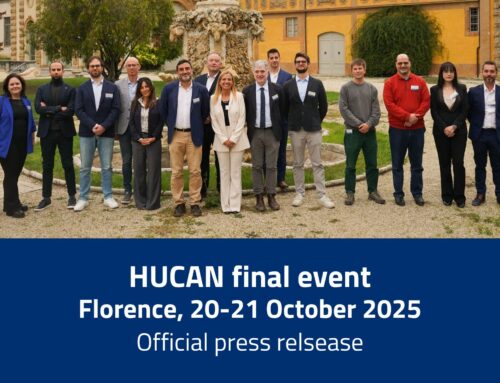The HUCAN project consortium has successfully passed its maturity gate, a significant milestone achieved during a presentation meeting, held online. The meeting, attended by SESAR representatives Oznur Uygur and Daniel Brandi, marked the formal presentation of two innovative solutions developed during the project. Both solutions successfully achieved Technology Readiness Level (TRL) 2.
Solution #1: a new holistic certification approach for automated ATM systems
One of the project’s key outcomes is a new holistic certification approach for novel ATM related systems based on higher levels of automation, a design approach that integrates strategic AI certification objectives from the early stages of development. This approach is tailored to support SESAR projects within both exploratory and industrial research. By aligning design goals with compliance from the outset, the approach aims to ensure that regulatory and safety standards are addressed effectively by the end of the development cycle.
This framework covers multiple dimensions, including concept design, technical assurance (safety and security), human factors, ethics, and liability. The goal is to reduce the risk of late-stage rework and support the deployment of new ATM innovations. This approach also considers the key performance areas identified in the EASA AI Roadmap 2.0 and the provisions of the AI Act (Reg. (EU) 2024/1689), particularly Article 108, related to high-risk AI systems in aviation.
Solution #2: preliminary guidelines for certification-aware ATM advanced automation
The second solution is the HUCAN Preliminary Guidelines to design ATM-related systems based on higher levels of automation. These guidelines provide practical recommendations for integrating AI into the SESAR validation framework, ensuring alignment with evolving certification objectives. The approach covers key performance areas identified in the EASA AI Roadmap 2.0 and the SESAR Project Handbook, including concept design, technical assurance (safety and security), human factors, and ethics.
Targeted at SESAR projects in both exploratory and industrial research streams, the guidelines are designed to help research teams consistently incorporate certification considerations throughout their development stages. This is a step towards reducing the gap between research and time-to-market. By fostering a more consistent approach across projects, the guidelines also seek to exploit synergies between research and certification, helping to support the transition from R&D to deployment. The solution is also a response to the provisions of the AI Act (Reg. (EU) 2024/1689), specifically Article 108, which introduces new requirements for high-risk AI systems in aviation.





